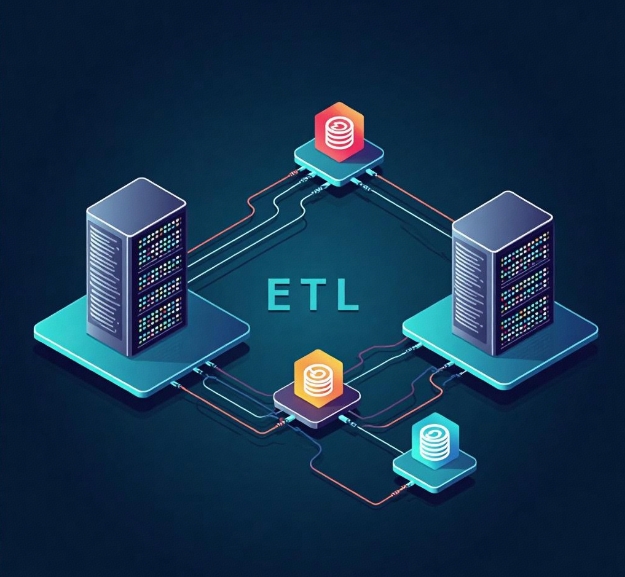Shenzhen Mall Development Data Migration Services
- latest articles
- 1.DApp Development & Customization: Merging Diverse Market Needs with User Experience 2.Analysis of the Core Technical System in DApp Project Development 3.How to achieve cross-chain interoperability in Web3 projects? 4.How does the tokenization of points reconstruct the e-commerce ecosystem? 5.How to Set and Track Data Metrics for a Points Mall? 6.What is DApp Development? Core Concepts and Technical Analysis 7.Inventory of commonly used Web3 development tools and usage tips 8.Development of a Distribution System Integrated with Social E-commerce 9.Six Key Steps for Businesses to Build a Points Mall System 10.What is DApp Development? A Comprehensive Guide from Concept to Implementation
- Popular Articles
- 1.Future Trends and Technology Predictions for APP Development in 2025 2.Analysis of the DeFi Ecosystem: How Developers Can Participate in Decentralized Finance Innovation 3.From Zero to One: How PI Mall Revolutionizes the Traditional E-commerce Model 4.DAPP Development | Best Practices for Professional Customization and Rapid Launch 5.Recommended by the Web3 developer community: the most noteworthy forums and resources 6.From Cloud Computing to Computing Power Leasing: Building a Flexible and Scalable Computing Resource Platform 7.How to Develop a Successful Douyin Mini Program: Technical Architecture and Best Practices 8.Shared Bike System APP: The Convenient Choice in the Era of Smart Travel 9.How to Create a Successful Dating App: From Needs Analysis to User Experience Design 10.From Design to Development: The Complete Process of Bringing an APP Idea to Life
With the advent of the digital age, various industries are rapidly moving towards the internet, and e-commerce, as an innovative business model, has been widely adopted globally. Especially in Shenzhen, one of China's most dynamic and innovative cities, many enterprises choose to establish their e-commerce operations here, building their own mall platforms. However, mall development involves complex technologies and systems, with data migration emerging as a critical challenge in the process.
In this context, the importance of Shenzhen mall development data migration services is becoming increasingly prominent. This article will explore data migration services in Shenzhen mall development, analyzing their roles, challenges, implementation steps, and how to choose the right service provider.
I. Data Migration in Shenzhen Mall Development
In Shenzhen's e-commerce environment, mall development typically includes multiple functional modules such as product display, transaction management, order processing, and customer management. As business expands, the data within the mall system continues to grow. This data includes user information, product details, order records, payment records, etc. It not only needs to be efficiently stored and managed within the mall system but also migrated between different systems and platforms.
Data migration refers to transferring data from one system to another, typically involving extraction, transformation, and loading (ETL). In the mall development process, data migration services play a crucial role, ensuring a smooth transition from the old system to the new one while maintaining data consistency, integrity, and security throughout the migration.
II. The Role of Data Migration Services
Ensuring Business Continuity
During mall system development, businesses often need to migrate existing data from old systems to new ones, ensuring the new platform can handle current business data. This migration must guarantee data integrity and the stable operation of the system post-migration, avoiding business interruptions due to data loss or errors.Improving Operational Efficiency
Data migration is not just about transferring data; it also involves data cleaning, organization, and optimization. Through data migration, the mall system can operate more efficiently on the new platform, enhancing operational efficiency. For example, migration can better align with customer needs, optimize product categorization, and streamline order processing.Supporting Technology Upgrades and Platform Migration
As technology advances, mall platforms require upgrades or even platform migrations. Data migration services assist malls in transitioning from traditional systems to cloud platforms or from one database to another, ensuring the new system architecture effectively supports the mall's ongoing development.Data Security and Compliance
Protecting user privacy and data security is paramount during data migration. In Shenzhen, especially with increasingly stringent data protection laws, mall development companies must ensure compliance with relevant regulations. For instance, the Personal Information Protection Law (PIPL) imposes strict requirements on data security and privacy, necessitating adherence during migration.
III. Challenges in Shenzhen Mall Development Data Migration
Although data migration services are crucial for mall development, they face numerous challenges in practice.
Large Data Volume
As mall system data grows, the volume becomes substantial, increasing the difficulty of migration. Handling large amounts of user data and order records requires consideration of storage and transmission issues. Efficiently and accurately migrating big data is a significant challenge.Data Format Differences
Different mall systems and platforms use various database systems or storage methods, leading to inconsistent data formats. Migration requires format conversion and mapping to ensure seamless integration between systems, a process that demands considerable time and effort.Data Consistency and Integrity
Maintaining data consistency and integrity is one of the most critical factors in migration. Data loss or inconsistency during migration can severely impact mall operations, making it a key technical challenge.Risk of Business Interruption
During mall system migration, there may be periods of business interruption or service unavailability. This not only affects normal operations but can also lead to customer loss. Minimizing impact and ensuring business continuity is a vital challenge in Shenzhen mall development.
IV. Implementation Steps of Data Migration Services
Shenzhen mall development data migration services generally include the following steps:
Requirement Analysis and Assessment
Before migration, the mall development company must conduct requirement analysis to define migration goals, scope, and expected outcomes. Through client communication, assess current data structure, volume, and potential challenges. This phase is crucial for a smooth migration process.Data Cleaning and Organization
Pre-migration, perform data cleaning and organization to ensure no redundant or erroneous data. This involves removing duplicates, correcting errors, and filling in missing data to enhance accuracy and completeness.Data Migration Planning and Design
After cleaning and organizing, develop a detailed migration plan and design. This includes selecting appropriate tools, determining migration methods (e.g., online or offline), and setting a timeline.Data Migration Execution
During execution, the actual migration begins. The technical team must follow the plan strictly, ensuring all data is successfully transferred to the new system, while monitoring integrity, consistency, and security.Post-Migration Verification and Testing
After migration, conduct comprehensive verification and testing to ensure the system operates correctly with no data loss or corruption. Performance testing is also necessary to confirm stable and efficient operation in real-world conditions.Ongoing Monitoring and Optimization
Post-migration, the mall system requires continuous monitoring and optimization to prevent issues in the long term. This includes regular data backups, system performance monitoring, and collecting and analyzing user feedback.
V. How to Choose the Right Data Migration Service Provider
In Shenzhen's e-commerce market, selecting a professional mall development company for data migration services is crucial. Here are key points to consider when choosing a provider:
Expertise and Experience
Choosing a provider with extensive experience is key to ensuring smooth data migration. Experienced companies can offer customized solutions based on client needs, avoiding unnecessary risks.Technical Capability
Data migration involves multiple technical areas, including database management, data security, and system architecture. Selecting a company with strong technical skills ensures timely resolution of challenges, preventing migration failures.Service Assurance and Post-Sale Support
A good provider not only offers high-quality migration services but also provides comprehensive technical support and service guarantees post-migration. This is especially important for long-term system stability.Reputation and Customer Reviews
When selecting a provider, consider their industry reputation and customer feedback. Understanding other clients' experiences helps assess the provider's capabilities and reliability.
VI. Summary
Data migration services in Shenzhen mall development are a critical task that directly impacts the stable operation and continuous growth of malls. Through scientific and rational planning and execution, data migration ensures a smooth transition of mall system data, enhances platform efficiency, and safeguards data security and integrity. When choosing a data migration service provider, businesses should prioritize professional capability, technical strength, and service assurance to ensure successful migration.
-

How does the tokenization of points reconstruct the e-commerce ecosystem?
With the continuous advancement of internet technology and the gradual prolifera···
-

How to Set and Track Data Metrics for a Points Mall?
With the rapid development of the e-commerce industry, points malls, as a common···
-

Development of a Distribution System Integrated with Social E-commerce
With the rapid development of internet technology, the e-commerce industry has e···

 Blockchain
Blockchain












